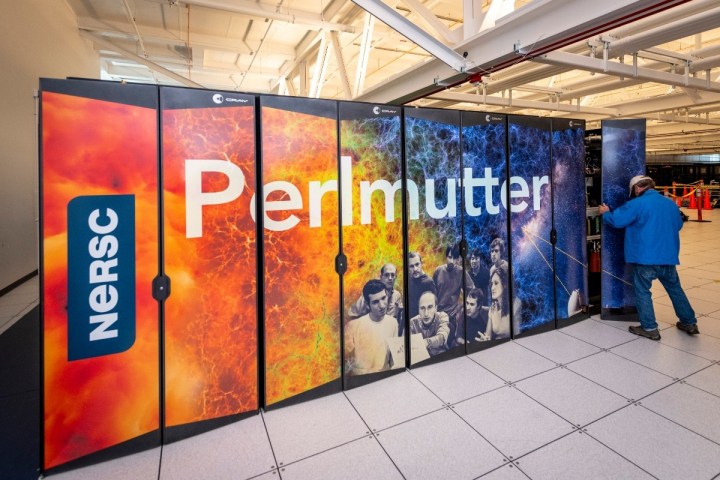
To hunt for one of the most mysterious forces in the universe, you need a powerful computer. Soon the hunt for dark energy will get a boost from a next-generation supercomputer, which will help in a project to create the most detailed 3D map yet of the universe.
The Wall Street Journal reports that the new Perlmutter supercomputer, recently installed at the National Energy Research Scientific Computing Center in Berkeley, California, will begin working on the Dark Energy Spectroscopic Instrument (DESI) survey project this summer. The project aims to learn more about dark energy, a hypothesized type of energy that accounts for a whopping 68% of the universe. To do this, the DESI instrument at the Kitt Peak National Observatory in Arizona will observe the night sky with 5,000 spectroscopic “eyes” which will record the light from 35 million galaxies.
To analyze all of that data, researchers will use the Perlmutter supercomputer. Named after Nobel Prize-winning astrophysicist Saul Perlmutter, the computer is a significant upgrade over the lab’s previous supercomputer, Cori, and is predicted to reach 100 petaFLOPS of processing power.
Perlmutter will use artificial intelligence to identify significant objects in the DESI data, then other applications can calculate the distance between these objects. By observing how gravity operates on a very large scale, researchers can pick up clues about the expansion of the universe, and from this, learn about dark energy.
That’s because dark energy is something we know exists due to the way the universe expands. Scientists have known for a long time that the universe is expanding, but research using the Hubble Space Telescope in the 1990s showed that the rate of this expansion was not slowing down, as would be expected due to gravity, but was actually accelerating. That’s the puzzle: There’s some unknown force pushing galaxies outward, and that force is what we call dark energy. To understand it more, we need to track distant objects like galaxies or quasars and map their distance.
To this end, the DESI project aims to produce a 3D map of the sky, far more detailed than any other 3D map made to date. “That allows us to look further back into the history of the universe and to a time period that’s never been probed [at high precision] for dark energy studies,” Aaron Meisner, a staff scientist at the National Science Foundation’s NOIRLab, told the WSJ.
DESI is expected to begin its five-year survey later this year.



